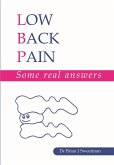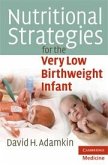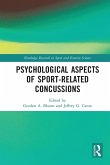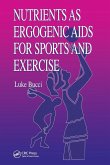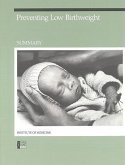Stuart Mcgill
Low Back Disorders
Stuart Mcgill
Low Back Disorders
- Broschiertes Buch
- Merkliste
- Auf die Merkliste
- Bewerten Bewerten
- Teilen
- Produkt teilen
- Produkterinnerung
- Produkterinnerung
Low Back Disorders, Fourth Edition, written by internationally recognized low back specialist Stuart McGill guides readers through thorough assessment and treatment of low back pain, providing evidence-based research on the best methods of rehabilitation and prevention of future injury.
Andere Kunden interessierten sich auch für
![Low Back Pain: Some Real Answers Low Back Pain: Some Real Answers]() Brian SweetmanLow Back Pain: Some Real Answers39,99 €
Brian SweetmanLow Back Pain: Some Real Answers39,99 €![Nutritional Strategies for the Very Low Birthweight Infant Nutritional Strategies for the Very Low Birthweight Infant]() David H AdamkinNutritional Strategies for the Very Low Birthweight Infant82,99 €
David H AdamkinNutritional Strategies for the Very Low Birthweight Infant82,99 €![Preventing Low Birthweight Preventing Low Birthweight]() Institute Of MedicinePreventing Low Birthweight59,99 €
Institute Of MedicinePreventing Low Birthweight59,99 €![Psychological Aspects of Sport-Related Concussions Psychological Aspects of Sport-Related Concussions]() Psychological Aspects of Sport-Related Concussions55,99 €
Psychological Aspects of Sport-Related Concussions55,99 €![Nutrients as Ergogenic AIDS for Sports and Exercise Nutrients as Ergogenic AIDS for Sports and Exercise]() Luke R BucciNutrients as Ergogenic AIDS for Sports and Exercise84,99 €
Luke R BucciNutrients as Ergogenic AIDS for Sports and Exercise84,99 €![Preventing Low Birthweight Preventing Low Birthweight]() Institute Of MedicinePreventing Low Birthweight21,99 €
Institute Of MedicinePreventing Low Birthweight21,99 €![Experiments on the Effect of Freezing and Other Low Temperatures Upon the Viability of the Bacillus of Typhoid Fever, With Considerations Regarding Ic Experiments on the Effect of Freezing and Other Low Temperatures Upon the Viability of the Bacillus of Typhoid Fever, With Considerations Regarding Ic]() Experiments on the Effect of Freezing and Other Low Temperatures Upon the Viability of the Bacillus of Typhoid Fever, With Considerations Regarding Ic19,99 €
Experiments on the Effect of Freezing and Other Low Temperatures Upon the Viability of the Bacillus of Typhoid Fever, With Considerations Regarding Ic19,99 €-
-
-
Low Back Disorders, Fourth Edition, written by internationally recognized low back specialist Stuart McGill guides readers through thorough assessment and treatment of low back pain, providing evidence-based research on the best methods of rehabilitation and prevention of future injury.
Hinweis: Dieser Artikel kann nur an eine deutsche Lieferadresse ausgeliefert werden.
Hinweis: Dieser Artikel kann nur an eine deutsche Lieferadresse ausgeliefert werden.
Produktdetails
- Produktdetails
- Verlag: Human Kinetics Publishers
- Fourth Edition
- Seitenzahl: 456
- Erscheinungstermin: 13. Oktober 2025
- Englisch
- Abmessung: 279mm x 216mm
- ISBN-13: 9781718236257
- ISBN-10: 1718236255
- Artikelnr.: 73785264
- Herstellerkennzeichnung
- Libri GmbH
- Europaallee 1
- 36244 Bad Hersfeld
- gpsr@libri.de
- Verlag: Human Kinetics Publishers
- Fourth Edition
- Seitenzahl: 456
- Erscheinungstermin: 13. Oktober 2025
- Englisch
- Abmessung: 279mm x 216mm
- ISBN-13: 9781718236257
- ISBN-10: 1718236255
- Artikelnr.: 73785264
- Herstellerkennzeichnung
- Libri GmbH
- Europaallee 1
- 36244 Bad Hersfeld
- gpsr@libri.de
Stuart McGill, PhD, is a distinguished professor emeritus at the University of Waterloo in Ontario, Canada, and chief scientific officer at Backfitpro Inc. He is a world-renowned lecturer and expert in spine function, injury prevention, and rehabilitation. He has received several awards for his work, including the Volvo Bioengineering Award for Low Back Pain Research from Sweden and the Order of Canada for contributions to back pain assessment and treatment. McGill previously served as the president of the Canadian Society for Biomechanics and as an elected member of the executive for the International Society of Biomechanics. He sat on the editorial boards of the journals Spine, Clinical Biomechanics, and Journal of Applied Biomechanics. McGill has produced over 245 scientific publications on lumbar function, mechanisms of low back injury, investigation of rehabilitation programs matched to specific categories of back pain patients, and the formulation of strategies to avoid work-related injuries. He has provided expertise to government agencies, corporations, professional athletes and teams, and legal firms. He is one of the few scientists who, in addition to performing research, is regularly requested by those in the medical profession and by sports teams to consult on challenging patients from around the world.
Part I. Scientific Foundation
Chapter 1. Introduction to the Issues and Scientific Approach Unique to
This Book
Legislative Landscape: The Unfortunate Adverse Impact on Painful Backs
Deficiencies in Current Diagnostic Practices
Inadequacies in Current Care and Prevention
Mechanical Loading and the Process of Injury: A Low Back Tissue Injury
Primer
Excellent Clinicians and Excellent Practice
Unique Scientific Foundation of This Book
In Vitro Lab
In Vivo Lab
A Final Note
Chapter 2. Epidemiological Studies and What They Really Mean
Influence of Randomized Controlled Trials and Other Epidemiological
Approaches
Misunderstandings of Epidemiology
Multidimensional Links Among Biomechanical, Psychosocial, and Personal
Variables
How Do Biomechanical Factors Affect LBD?
Links Between Personal Factors and LBD
Studies of Exercise Intervention
Practical Application: What the Evidence Supports
What Works Clinically
A Final Note
Chapter 3. Functional Anatomy of the Lumbar Spine
Anatomy Trains
Fascia: How Our Understanding Has Changed and Its Large Influence on
Biomechanics, Resilience, and Performance
Basic Neural Structure
Vascular Anatomy
Vertebrae
Sacroiliac Joints
Intervertebral Disc
Muscles
Ligaments
Lumbodorsal Fascia (LDF)
Quick Review of the Pelvis, Hips, and Related Musculature
Clinically Relevant Aspects of Pain and Anatomic Structure
A Final Note
Chapter 4. Normal and Injury Mechanics of the Lumbar Spine
Kinematic Properties of the Thoracolumbar Spine
Kinetics and Normal Lumbar Spine Mechanics
Dubious Lifting Mechanisms
Other Important Mechanisms of Normal Spine Mechanics
Injury Mechanisms
Biomechanical and Physiological Changes Following Injury
A Final Note
Chapter 5. Myths and Realities of Lumbar Spine Stability
Why Spine Stability Is Important for Everyone
Stability: A Qualitative Analogy
Quantitative Foundation of Stability
Stability Myths, Facts, and Clinical Implications
A Final Note
Part II. Injury Prevention
Chapter 6. LBD Risk Assessment
Brief Review of the Risk Factors for LBD
NIOSH Approach to Risk Assessment
Snook Psychophysical Approach
Lumbar Motion Monitor (LMM)
Ergowatch Approach
Biological Signal–Driven Model Approaches
A Final Note
Chapter 7. Reducing the Risk of Low Back Injury
Lessons From the Literature
LBD Prevention for Workers
The Question of Back Belts
LBD Prevention for Employers
Injury Prevention Primer
A Note for Consultants
Reducing the Risk in Athletes
A Final Note
Part III. Low Back Rehabilitation
Chapter 8. Building Better Rehabilitation Programs for Low Back Injuries
Pain-Reducing Mechanisms of Exercise
Five-Stage Back Training Program
Finding the Best Approach
Stages of Patient Progression
Guidelines for Developing the Best Exercise Regimen
A Final Note
Chapter 9. Evaluating the Patient
Most Crucial Element in Evaluation
First Clinician–Patient Meeting
Assessing Posture and Movement Quality
Some Provocation Tests
Some Functional Screens
Testing Muscle Endurance
A Final Note
Chapter 10. Developing the Exercise Program
Philosophy of Low Back Exercise Design
Clinical Wisdom
Thoughts on Mobility
Identifying Safe and Effective Exercises
Beginner’s Program for Pain Control and Stabilization
Exercises That May Be Used in a Stabilization Program
Special Conditions
A Final Note
Chapter 11. Advanced Exercises: Preparing for a More Robust Life
Safely Increasing Challenges
Occupational and Athletic Work Hardening
A Final Note
Epilogue
Appendix
Glossary
References and Additional Readings
Index
About the Author
Chapter 1. Introduction to the Issues and Scientific Approach Unique to
This Book
Legislative Landscape: The Unfortunate Adverse Impact on Painful Backs
Deficiencies in Current Diagnostic Practices
Inadequacies in Current Care and Prevention
Mechanical Loading and the Process of Injury: A Low Back Tissue Injury
Primer
Excellent Clinicians and Excellent Practice
Unique Scientific Foundation of This Book
In Vitro Lab
In Vivo Lab
A Final Note
Chapter 2. Epidemiological Studies and What They Really Mean
Influence of Randomized Controlled Trials and Other Epidemiological
Approaches
Misunderstandings of Epidemiology
Multidimensional Links Among Biomechanical, Psychosocial, and Personal
Variables
How Do Biomechanical Factors Affect LBD?
Links Between Personal Factors and LBD
Studies of Exercise Intervention
Practical Application: What the Evidence Supports
What Works Clinically
A Final Note
Chapter 3. Functional Anatomy of the Lumbar Spine
Anatomy Trains
Fascia: How Our Understanding Has Changed and Its Large Influence on
Biomechanics, Resilience, and Performance
Basic Neural Structure
Vascular Anatomy
Vertebrae
Sacroiliac Joints
Intervertebral Disc
Muscles
Ligaments
Lumbodorsal Fascia (LDF)
Quick Review of the Pelvis, Hips, and Related Musculature
Clinically Relevant Aspects of Pain and Anatomic Structure
A Final Note
Chapter 4. Normal and Injury Mechanics of the Lumbar Spine
Kinematic Properties of the Thoracolumbar Spine
Kinetics and Normal Lumbar Spine Mechanics
Dubious Lifting Mechanisms
Other Important Mechanisms of Normal Spine Mechanics
Injury Mechanisms
Biomechanical and Physiological Changes Following Injury
A Final Note
Chapter 5. Myths and Realities of Lumbar Spine Stability
Why Spine Stability Is Important for Everyone
Stability: A Qualitative Analogy
Quantitative Foundation of Stability
Stability Myths, Facts, and Clinical Implications
A Final Note
Part II. Injury Prevention
Chapter 6. LBD Risk Assessment
Brief Review of the Risk Factors for LBD
NIOSH Approach to Risk Assessment
Snook Psychophysical Approach
Lumbar Motion Monitor (LMM)
Ergowatch Approach
Biological Signal–Driven Model Approaches
A Final Note
Chapter 7. Reducing the Risk of Low Back Injury
Lessons From the Literature
LBD Prevention for Workers
The Question of Back Belts
LBD Prevention for Employers
Injury Prevention Primer
A Note for Consultants
Reducing the Risk in Athletes
A Final Note
Part III. Low Back Rehabilitation
Chapter 8. Building Better Rehabilitation Programs for Low Back Injuries
Pain-Reducing Mechanisms of Exercise
Five-Stage Back Training Program
Finding the Best Approach
Stages of Patient Progression
Guidelines for Developing the Best Exercise Regimen
A Final Note
Chapter 9. Evaluating the Patient
Most Crucial Element in Evaluation
First Clinician–Patient Meeting
Assessing Posture and Movement Quality
Some Provocation Tests
Some Functional Screens
Testing Muscle Endurance
A Final Note
Chapter 10. Developing the Exercise Program
Philosophy of Low Back Exercise Design
Clinical Wisdom
Thoughts on Mobility
Identifying Safe and Effective Exercises
Beginner’s Program for Pain Control and Stabilization
Exercises That May Be Used in a Stabilization Program
Special Conditions
A Final Note
Chapter 11. Advanced Exercises: Preparing for a More Robust Life
Safely Increasing Challenges
Occupational and Athletic Work Hardening
A Final Note
Epilogue
Appendix
Glossary
References and Additional Readings
Index
About the Author
Part I. Scientific Foundation
Chapter 1. Introduction to the Issues and Scientific Approach Unique to
This Book
Legislative Landscape: The Unfortunate Adverse Impact on Painful Backs
Deficiencies in Current Diagnostic Practices
Inadequacies in Current Care and Prevention
Mechanical Loading and the Process of Injury: A Low Back Tissue Injury
Primer
Excellent Clinicians and Excellent Practice
Unique Scientific Foundation of This Book
In Vitro Lab
In Vivo Lab
A Final Note
Chapter 2. Epidemiological Studies and What They Really Mean
Influence of Randomized Controlled Trials and Other Epidemiological
Approaches
Misunderstandings of Epidemiology
Multidimensional Links Among Biomechanical, Psychosocial, and Personal
Variables
How Do Biomechanical Factors Affect LBD?
Links Between Personal Factors and LBD
Studies of Exercise Intervention
Practical Application: What the Evidence Supports
What Works Clinically
A Final Note
Chapter 3. Functional Anatomy of the Lumbar Spine
Anatomy Trains
Fascia: How Our Understanding Has Changed and Its Large Influence on
Biomechanics, Resilience, and Performance
Basic Neural Structure
Vascular Anatomy
Vertebrae
Sacroiliac Joints
Intervertebral Disc
Muscles
Ligaments
Lumbodorsal Fascia (LDF)
Quick Review of the Pelvis, Hips, and Related Musculature
Clinically Relevant Aspects of Pain and Anatomic Structure
A Final Note
Chapter 4. Normal and Injury Mechanics of the Lumbar Spine
Kinematic Properties of the Thoracolumbar Spine
Kinetics and Normal Lumbar Spine Mechanics
Dubious Lifting Mechanisms
Other Important Mechanisms of Normal Spine Mechanics
Injury Mechanisms
Biomechanical and Physiological Changes Following Injury
A Final Note
Chapter 5. Myths and Realities of Lumbar Spine Stability
Why Spine Stability Is Important for Everyone
Stability: A Qualitative Analogy
Quantitative Foundation of Stability
Stability Myths, Facts, and Clinical Implications
A Final Note
Part II. Injury Prevention
Chapter 6. LBD Risk Assessment
Brief Review of the Risk Factors for LBD
NIOSH Approach to Risk Assessment
Snook Psychophysical Approach
Lumbar Motion Monitor (LMM)
Ergowatch Approach
Biological Signal–Driven Model Approaches
A Final Note
Chapter 7. Reducing the Risk of Low Back Injury
Lessons From the Literature
LBD Prevention for Workers
The Question of Back Belts
LBD Prevention for Employers
Injury Prevention Primer
A Note for Consultants
Reducing the Risk in Athletes
A Final Note
Part III. Low Back Rehabilitation
Chapter 8. Building Better Rehabilitation Programs for Low Back Injuries
Pain-Reducing Mechanisms of Exercise
Five-Stage Back Training Program
Finding the Best Approach
Stages of Patient Progression
Guidelines for Developing the Best Exercise Regimen
A Final Note
Chapter 9. Evaluating the Patient
Most Crucial Element in Evaluation
First Clinician–Patient Meeting
Assessing Posture and Movement Quality
Some Provocation Tests
Some Functional Screens
Testing Muscle Endurance
A Final Note
Chapter 10. Developing the Exercise Program
Philosophy of Low Back Exercise Design
Clinical Wisdom
Thoughts on Mobility
Identifying Safe and Effective Exercises
Beginner’s Program for Pain Control and Stabilization
Exercises That May Be Used in a Stabilization Program
Special Conditions
A Final Note
Chapter 11. Advanced Exercises: Preparing for a More Robust Life
Safely Increasing Challenges
Occupational and Athletic Work Hardening
A Final Note
Epilogue
Appendix
Glossary
References and Additional Readings
Index
About the Author
Chapter 1. Introduction to the Issues and Scientific Approach Unique to
This Book
Legislative Landscape: The Unfortunate Adverse Impact on Painful Backs
Deficiencies in Current Diagnostic Practices
Inadequacies in Current Care and Prevention
Mechanical Loading and the Process of Injury: A Low Back Tissue Injury
Primer
Excellent Clinicians and Excellent Practice
Unique Scientific Foundation of This Book
In Vitro Lab
In Vivo Lab
A Final Note
Chapter 2. Epidemiological Studies and What They Really Mean
Influence of Randomized Controlled Trials and Other Epidemiological
Approaches
Misunderstandings of Epidemiology
Multidimensional Links Among Biomechanical, Psychosocial, and Personal
Variables
How Do Biomechanical Factors Affect LBD?
Links Between Personal Factors and LBD
Studies of Exercise Intervention
Practical Application: What the Evidence Supports
What Works Clinically
A Final Note
Chapter 3. Functional Anatomy of the Lumbar Spine
Anatomy Trains
Fascia: How Our Understanding Has Changed and Its Large Influence on
Biomechanics, Resilience, and Performance
Basic Neural Structure
Vascular Anatomy
Vertebrae
Sacroiliac Joints
Intervertebral Disc
Muscles
Ligaments
Lumbodorsal Fascia (LDF)
Quick Review of the Pelvis, Hips, and Related Musculature
Clinically Relevant Aspects of Pain and Anatomic Structure
A Final Note
Chapter 4. Normal and Injury Mechanics of the Lumbar Spine
Kinematic Properties of the Thoracolumbar Spine
Kinetics and Normal Lumbar Spine Mechanics
Dubious Lifting Mechanisms
Other Important Mechanisms of Normal Spine Mechanics
Injury Mechanisms
Biomechanical and Physiological Changes Following Injury
A Final Note
Chapter 5. Myths and Realities of Lumbar Spine Stability
Why Spine Stability Is Important for Everyone
Stability: A Qualitative Analogy
Quantitative Foundation of Stability
Stability Myths, Facts, and Clinical Implications
A Final Note
Part II. Injury Prevention
Chapter 6. LBD Risk Assessment
Brief Review of the Risk Factors for LBD
NIOSH Approach to Risk Assessment
Snook Psychophysical Approach
Lumbar Motion Monitor (LMM)
Ergowatch Approach
Biological Signal–Driven Model Approaches
A Final Note
Chapter 7. Reducing the Risk of Low Back Injury
Lessons From the Literature
LBD Prevention for Workers
The Question of Back Belts
LBD Prevention for Employers
Injury Prevention Primer
A Note for Consultants
Reducing the Risk in Athletes
A Final Note
Part III. Low Back Rehabilitation
Chapter 8. Building Better Rehabilitation Programs for Low Back Injuries
Pain-Reducing Mechanisms of Exercise
Five-Stage Back Training Program
Finding the Best Approach
Stages of Patient Progression
Guidelines for Developing the Best Exercise Regimen
A Final Note
Chapter 9. Evaluating the Patient
Most Crucial Element in Evaluation
First Clinician–Patient Meeting
Assessing Posture and Movement Quality
Some Provocation Tests
Some Functional Screens
Testing Muscle Endurance
A Final Note
Chapter 10. Developing the Exercise Program
Philosophy of Low Back Exercise Design
Clinical Wisdom
Thoughts on Mobility
Identifying Safe and Effective Exercises
Beginner’s Program for Pain Control and Stabilization
Exercises That May Be Used in a Stabilization Program
Special Conditions
A Final Note
Chapter 11. Advanced Exercises: Preparing for a More Robust Life
Safely Increasing Challenges
Occupational and Athletic Work Hardening
A Final Note
Epilogue
Appendix
Glossary
References and Additional Readings
Index
About the Author


